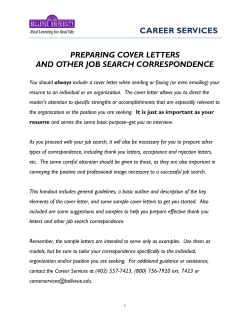
Document 54294
OMB No. 1024-OO18 Exp. 10-31-84 NPS Form 10-900 (3-82) United States Department of the Interior National Park Service National Register of Historic Places Inventory—Nomination Form See instructions in How to Complete National Register Forms Type all entries—complete applicable sections_______________ 1. Name historic Jewell Building (POO9;6-10) and/or common Dreamland Ballroom 2. Location street & number 2221-2225 N@«?*h 24th Street city, town Omaha state Nebraska NA not for publication NA vicinity of 031 code county Douglas code 055 3. Classification Category district _E_ building(s) structure site object Ownership public X private both Public Acquisition NA jn process being considered Status occupied X unoccupied work in progress Accessible X yes: restricted yes: unrestricted no Present Use agriculture commercial educational entertainment government industrial military museum park private residence religious scientific transportation X other: vacant 4. Owner of Property Omaha Economic Development Corporation name street & number 5620 Ames Avenue Omaha city, town state Nebraska vicinity of 5. Location of Legal Description courthouse, registry of deeds, etc. Register of Deeds, Omaha-Douglas County Civic Center street & number 1819 Farnam Street city, town Omaha state Nebraska 6. Representation in Existing Surveys A Comprehensive Plan for Historic title Preservation in Dmaha____________ date has this property been determined eligible? federal 1980 depository for survey records city, town pmaha state __ yes Xv __ no __ county _X_ local Omaha city Pianri1ng Dpparf-mprifstate Nebraska 7. Description Condition excellent good X fair deteriorated ruins unexposed Check one X unaltered altered Check one X original site moved date NA Describe the present and original (if known) physical appearance The Jewell Building is a two-story commercial building erected in 1923 in a vernacular interpretation of the Georgian Revival style. The first floor accomodates two storefronts which are divided by the entrance and stairway to the second floor dance hall and two apartments at the rear. The building has been vacant'arid boar'ded up for the las't several years, but appears to be relatively unchanged from its original plans. Rehabilitation plans are underway. The Jewell Building, designed by local architect Frederick A. Henninger, exhibits eclectic elements of the popular Georgian Revival style, one of the historical styles frequently applied to Omaha's vernacular commercial and residential buildings in the years between 1900 and 1940. The structure's first floor accommodates two 1600 square foot storefronts with individual entrances and display windows. Two apartments are located at the rear of the first floor with main entrances on the north (2233 and 2235 Grant Street) and rear doors in a recessed open-air corridor on the south. The northern storefront, on the corner of 24th and Grant streets, has a corner entrance, quite unlike the southern example. The storefronts are separated on the west (24th Street) facade by a central straight-topped entry which leads to the second floor ballroom. This entrance, flanked by brick pilasters and surmounted by an arch and brick gable composition, provides the major pedestrian level focal point. The arch, which surrounds a brick and stucco field, is repeated over straight-topped second-story windows on the west and north. A parapet composed of brick string courses frames a limestone slab inscribed "Jewell Building, 1923." Smaller stone tablets, located above a free-standing brick corner column, are inscribed with the street names, "24th Street" and "Grant Street." Additional relief is found on the northern (Grant Street) facade where a limestone arch leads to two first floor apartments and on the southern facade where a four-bay portico is inset within the structure's walls The ballroom and auxiliary rooms encompass the second floor. The original stage covers the east end of the floor, flanked by small side rooms, later converted into restrooms. In addition to the original stage, the other noteworthy interior feature is the original pressed metal ceiling which survives intact and in good condition. Office rooms are located in the east end of second floor on each side of the stairway. At the doorway to the ballroom, there is a ticket window with cloak room and refreshment stand, respectively, on each side of the doorway with openings from the ballroom. The Dreamland Ballroom was in operation until 1965; the barber shop and pool hall on first floor were open until the mid-1970's. The building has been vacant since that time. James C. Jewell, Sr. and then Jr., retained ownership of the building until March, 1983, when it was sold to the Omaha Economic Development Corporation for rehabilitation. In 1980 the building was designated a landmark by the City of Omaha Landmarks Heritage Preservation Commission. Period prehistoric 1400-1499 1500-1500 1600-1699 1700-1799 1800-1899 Specific dates Areas of Significance—Check and justify below archeology-prehistoric communitv olannina archeology-historic conservation agriculture economics architecture education art engineering X commerce exploration/settlement industry communications invention 1923 Builder/Architect Statement of Significance .(in one paragraph) landscape architecture law literature military music philosophy politics/government religion science sculpture X social/ humanitarian theater transportation .JL other (specify) Black history F. A. Henninger, Omaha, architect John Lof & Sons, Omaha, builder The Jewell Building has served an important role in Omaha 1 s musical, social, and Black heritage. As the Dreamland Ballroom, it was a music center where nationally-prominent jazz musicians performed from the 1920's to the 1960's. It has served as a gathering place for the Black community, located in the heart of the Black business district. The Jewell Building represents an important era in the cultural evolution of Omaha 1 s Black community. Erected in 1923, the structure indicates the beginning of Black movement into the Near North Side neighborhood. Before the 1920 T s, the center of the Black business district was proximate to 14th and.Dodge Streets, where James C. Jewell, Sr., operated "Jewell & Phannix," a billiard parlor. The influx of Blacks into Omaha during World War I, due to expanding wartime industries, forced increasing numbers of them to settle in the Near North Side where housing was available. Consequently, the Black business district jumped to the area surrounding 24th and Lake Streets so that it could more efficiently serve its customers. During 1923, James C. Jewell, Sr., (1873-1930) employed John Lof and Sons to construct a vernacular, two-story, steel frame, brown brick veneer structure at 24th and Grant Streets. The 46' by 130' flat-roofed structure when complete would accommodate shops and apartments on the lower floor, and a large public hall on the upper level. James C. Jewell and his son lived in one of the apartments and operated a billiard parlor at the "2221" storefront and a barber shop at the "2225" storefront, as well as the ballroom. This second story hall assured national prominence for the structure, for it housed the Dreamland Ballroom, a center for jazz and home to a variety of America's greatest jazz entertainers from the 1920's until the early 1960's. Among those who appeared on the Dreamland stage were Duke Ellington, Nat King Cole, Count Basie, Lionel Hampton, Charlie Barnet, Dizzy Gillespie, Dinah Washington, Ray Charles, Sarah Vaughn, Earl Hines and Louis Armstrong. Prior to the erection of the Jewell Building, Blacks had rented halls at Krug Park and Peony Park or the downtown Brandeis Theater for special programs or community group activities. Thus, the establishment of the ballroom provided the Black community with its own entertainment facility. 9. Major Bibliographical References See continuation sheet. 10. Geographical Data Acreage of nominated property less than one Quadrangle name Omaha North, NE Quadrangle scale 1:24000 UT M References A l 1 . 5 ! I 2 ! 5 , 3 ! 2 , 3 ,0 ! I 4 15 17 1 3 1 7 16 1°I Zone Easting Northing Zone c__I I I . I i i I 1,1,1,1 El i I I I i G , I I I , I l l I I i i I I , I , I I Northing Easting ___ I I I . I i Hi , I 11,1 i i i j_i Verbal boundary description and justification Lot 9, Block 1, Foster's Addition, City of Omaha, Nebraska, the land historically associated with this property. List all states and counties for properties overlapping state or county boundaries state NA COC|e county code state NA code county code 11. Form Prepared By Robert Peters, Preservation Administrator Penelope Chatfield Sodhi, Preservation Historian Omaha City Planning Department organization Nebraska State Historical Society date April, 1983 1819 Farnam Street street & number 1500 R Street telephone 402/471-3850 ———————Omaha name/title city or town Lincoln state Nebraska 12. State Historic Preservation Officer Certification The evaluated significance of this property within the state is: _________/-\ national________ state____ local__________________________________ As the designated State Historic Preservation Officer for the National Historic Preservation Act of 1966 (Public Law 89665), i hereby nominate this property for inclusion in the National Register and certify that it has been evaluated according to the criteria and procedures set forth by the National Park Service. 7J State Historic Preservation Officer signature title Director, Nebraska State Historical Society date For NFS use only I hereby certify that this property is included in the National Register in th date Keeper of the National Register Attest: Chief of Registration date .7/6/ Form No. 10-300a (Rev. 10-74) UNITED STATES DEPARTMENT OF THE INTERIOR NATIONAL PARK SERVICE NATIONAL REGISTER OF HISTORIC PLACES INVENTORY -- NOMINATION FORM CONTINUATION SHEET Significance ITEM NUMBER 8_____PAGE 2__________________ James C. Jewell, Jr., took over operation of the Jewell Building and Dreamland Ballroom after the death of his father in 1930. He was known as "Omaha's Ace Promoter," and it was through his efforts that Dreamland Ballroom became a renowned jazz center. Jewell's dedication to the establishment of this center is evidenced by his refusal to obtain a liquor license so that young people could attend the performances. The JewelIs were an influential family in the growing Black community due to their many business and political activities. Thus it was natural that Dreamland served for over four decades as a meeting place for the Black neighborhood. It was said that any Black coming through Omaha eventually met Jimmy Jewell, since his business attracted travelers and residents alike. In 1945 the United States government took over Dreamland Ballroom and established a U.S.O. Center for Black soldiers. Although the structure was returned to Jewell after a year, he sued the government for compensation and in a landmark court battle was awarded $3,000 in damages. He continued to operate Dreamland Ballroom until 1965, when it ceased to be a profit-making enterprise. A barber shop and the Tuxedo Pool Hall, on the first floor, remained open until the mid-1970's. The unpretentious Jewell Building exists as a monument to Omaha's tradition as a jazz center. Dreamland Ballroom gave Omaha a reputation among Blacks as one of the prime music locations in the United States. In addition, the structure is a meaningful part of Omaha's Black community in that it was one of the first substantial commercial buildings to be constructed in their developing neighborhood during the 1920's. The Jewell family's involvement in community affairs also led to the building's use as a gathering place and focal point for Blacks in Omaha. Form No. 10-300a (Rev. 10-74) UNITED STATES DEPARTMENT OF THE INTERIOR NATIONAL PARK SERVICE FOR NFS US£ ONIY RECEIVED NATIONAL REGISTER OF HISTORIC PLACES INVENTORY -- NOMINATION FORM CONTINUATION SHEET Bibliography ITEM NUMBER ^ DATEENTf818 PAGE A Comprehensive Program for Historic Preservation in Omaha. Planning Department, 1980, p. 70. Omaha City Deed record, Register of Deeds Office, Omaha/Douglas County Civic Center, Omaha, Nebraska. Omaha City Directories, 1928. Omaha World-Herald, January 23, 1930, p. 24, James C. Jewell death notice. Peters, Robert , Jewell Building Landmark Designation, Landmarks Heritage Preservation Commission, Omaha City Planning Department, June, 1980. Nebraska Federal Writers' Project, W.P.A., "Omaha Guide, Part II, Points of Interest in the City," MS. 1939, pp. 113-114. Filed at Nebraska State Historical Society Library. Smith, Alonzo N., "Omaha's Dreamland Ballroom: A Black Cultural Landmark," MS. presented at the Popular Culture Ass'n. Annual Meeting, April, 1983. Copy from Alonzo N. Smith, Black Studies Department, University of Nebraska at Omaha, Omaha, Nebraska.
© Copyright 2025



















